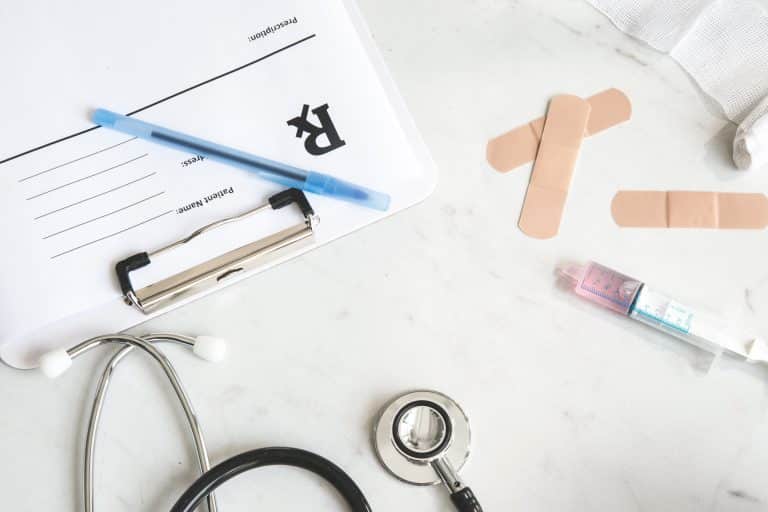CNA Basic Nursing Skills 14
The last sensation that is lost when dying is
Studies have shown that hearing is likely the last sense that remains before death. Always speak directly to the patient, explaining what you are doing. Do not discuss the patient as if they were not there.
Hospice specializes in the care of persons who are
Hospice is specialized care for clients who are terminally ill. The care includes the family and caregivers. It does not attempt to cure the client. Hospice is intended to improve the quality of life for everyone involved, by taking care of their physical, emotional, and spiritual needs.
There are two kinds of restraints
There are two categories of restraints that are meant to protect the client or others. Physical restraints are devices that are designed to restrict movement. Examples are vests, hand mitts, belts, lap trays, or bed rails. Chemical restraints are medications given to control behavior such as yelling or combative behavior. All restraints require a physician's order.
What is rigor mortis?
Rigor mortis is the stiffening and locking of the joints following death, due to muscles contracting. It occurs from head to toe. It can begin any time from a few minutes to a few hours after death.
A Foley catheter is used
A Foley Catheter is a sterile tube that is placed into he bladder to drain urine. It is held in place by a balloon that is inflated after being inserted. When a client has an indwelling Foley catheter, the nurse aide should check that the tubing is open so that the urine can flow from the bladder. After each position change or when the client returns to the bed or chair after being up, ensure that the tubing is not kinked or closed. The bag should be lower than the bladder to prevent backflow.
When taking a blood pressure, you should do all of the following EXCEPT
Blood pressure should never be taken in an arm with an IV. The compression of the cuff could cause the IV site to be damaged. Also, never take a blood pressure on an arm with a fistula for hemodialysis or a special line that has been inserted to deliver antibiotics.
When documenting in a patient's record, which statement is FALSE?
Never chart a procedure or care before doing it. If you forget to do it, or is something happens to the patient, you have made a false entry. Besides compromising the patient's care, you could be disciplined or lose your job.
What is the purpose of using the chain-of-command in a long-term care facility
Every staff member has a role in providing excellent client care. With good communication, each person can work within their scope of practice and allow others with different authority to handle appropriate tasks. In a long-term facility, the CNA reports to the RN or LVN, who reports to the Director of Nursing. The facility's Administrator and Medical Director may be the people with the most responsibility.
The nurse aide is assigned to a stroke patient with a diagnosis of aphasia. The nurse aide knows
When a client has suffered a stroke or other head injury, the speech center of the brain can be damaged, resulting in aphasia. Main signs of aphasia include difficulty finding appropriate words when speaking, trouble understanding speech, and difficulty with reading and writing.
Type 2 diabetes is
Type 2 diabetes is the most common form of diabetes, usually occurring in adults who are obese and inactive. It is a chronic disease that requires ongoing medical management. While there is no cure, it can be controlled with lifestyle changes with diet and exercise. Medications can also be helpful in keeping blood sugar levels at optimal levels.
Elderly residents sometimes appear stooped over and like they have lost height. This is due to
Osteoporosis in the spinal column can lead to a gradual loss of height and a stooped posture. The loss of calcium in the vertebral bones of the spine can cause fractures and back pain, although most of the fractures are tiny and painless. Both older men and women can get osteoporosis.
What can the nurse aide give the resident who has an order for NPO?
NPO is a common medical term that means the client can not eat or drink anything, including water or ice chips. A doctor orders a patient to be NPO for situations such as before surgery or certain lab work. If a client is ill or has a gastrointestinal condition, the doctor may write an order to be NPO until the cause is known. The nurse aide can provide mouth care for a client who is NPO. Placing a "NPO" sign over the client's bed will remind all staff members not to give the client anything to eat or drink.
Mrs. Andrews has an indwelling urinary catheter. Which is INCORRECT?
An indwelling urinary catheter is used to drain the bladder into a bag outside the body. In females, it is a long tube with a balloon that is inflated after being inserted through the urethra. The tube that drains the urine must not be tugged or become kinked. In males, it is attached to the client's inner thigh by tape or a special fastening device. Never attach the tube to anything except the client's inner thigh. The drainage bag should remain lower than the client's bladder to prevent backflow of urine.
You observe that a patient is bleeding from an IV site. You should
As a CNA, you may observe that an IV site is not normal. Bleeding, redness, or swelling should immediately be reported to the nurse. The IV will need to be removed and a sterile dressing applied. These procedures are beyond the cope of practice for a CNA.
The nurse aide notices on the flow sheet that a resident has not had a bowel movement for five days. The nurse aide should
While each person has a unique pattern of bowel movements, the normal number is 3 to 14 times a week. If there is a sudden change in pattern, or if the client has symptoms of constipation such as bloating, pain, or nausea, the cause should be examined. Adding fiber and fluids to the diet can help prevent constipation.
Three liquid ounces equals how many milliliters?
When converting milliliters (ml) to ounces (oz.) remember that 30 ml = 1 ounce. Although an ounce is slightly more, the amounts are considered to be equal by doctors and pharmacists.
Click for the next FREE CNA Test

